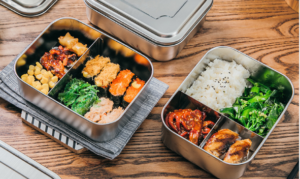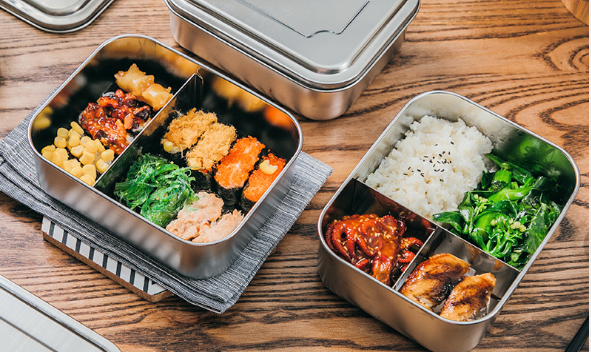
As a parent, you want to ensure school lunches for neurodivergent children contain the nutrients they need to thrive in school. But with so many processed foods and sugary drinks available, it can be tough to pack a healthy lunch for your child will eat.
As a holistic nutritionist, I understand that the right food, presented in the right way, can significantly impact their health, focus, and overall well-being. I’m passionate about helping families make informed choices about their food. In this blog post, I’ll share my tips for packing healthy school lunches that will nourish your child’s body and mind. This comprehensive guide provides actionable strategies to create balanced, toxin-free, and allergen-conscious lunches that cater to sensory needs and dietary sensitivities, empowering your child to thrive
Understanding the Unique Nutritional Needs of Neurodivergent Children
Neurodivergent children, including those with ADHD, autism, and sensory processing challenges, often have specific nutritional requirements. A well-designed lunch should:
Fuel Brainpower: Provide sustained energy and support cognitive function, improving concentration and focus throughout the school day.
Promote Gut Health: A healthy gut is crucial for overall well-being, impacting everything from mood to immunity. Reducing inflammation through diet is key.
Address Allergies and Sensitivities: Many neurodivergent children benefit from eliminating common allergens like gluten and casein.
Cater to Sensory Preferences: Considering textures, flavours, and presentation can encourage better eating habits and reduce mealtime stress.
Minimise Toxin Exposure: Choosing safe food storage containers protects developing brains from harmful chemicals.
Prioritising whole, nutrient-rich foods can positively influence a child’s concentration, emotional regulation, sleep, and overall health.
The Importance of Whole Foods
The first step to packing a healthy school lunch is to focus on whole foods. Whole foods are unprocessed or minimally processed foods that are as close to their natural state as possible. They’re packed with nutrients that your child needs to grow and learn.
Some great whole-food options for school lunches include:
Fruits and vegetables: These are packed with vitamins, minerals, and fibre.
Whole gluten-free grains: These provide sustained energy and fibre.
Lean protein: This helps your child feel full and satisfied.
Healthy fats: These are essential for brain development and function.
Tips for Packing a Healthy School Lunch
Here are a few tips to help you pack a healthy school lunch:
Get your child involved: Let them help you choose and prepare their lunch.
Pack a variety of foods. This will help your child get the nutrients they need.
Make it fun: Use colourful containers and fun shapes to make lunch more appealing.
Be mindful of allergens: If your child has any allergies, avoid those foods.
Allergen-Free Lunches: The Impact of Gluten and Casein
Many neurodivergent children exhibit gluten sensitivities (found in wheat, barley, and rye) and casein (a protein in dairy). These proteins can contribute to gut inflammation, impacting behaviour, focus, and overall well-being. Research suggests that removing gluten and casein from the diet can significantly improve these symptoms in some individuals. It’s crucial to consult with a healthcare professional or a registered nutritionist before making significant dietary changes.
Delicious and Nutritious Gluten-Free & Dairy-Free Lunch Ideas.

Protein-Packed Bento Box: Grilled organic chicken or turkey slices, roasted sweet potato cubes, avocado slices, and a side of cucumber sticks.
Energy-enhancing fried or jollof rice: Brown rice with either brown beans or good amounts of green peas. Add generous amounts of vegetables like carrots, green beans, bell peppers, and cabbage in the case of jollof rice.
Probiotic-rich Coconut yogurt with fruit and gluten-free granola
Gluten-free Dairy-Free Wraps: Coconut flour or cassava wraps filled with hummus, shredded carrots, bell peppers, and lean protein (turkey, chicken, or plant-based alternatives).
Nutrient-Dense Pasta Salad: Chickpea or lentil pasta tossed with olive oil, garlic, roasted vegetables (broccoli, zucchini, carrots), and a sprinkle of hemp seeds.
Filling bean balls: Fried bean balls with a side salad in olive oil dressing or avocado.
Balanced turkey and sardine sandwich on whole gluten-free bread with a side of fruit and vegetables
Protein-rich Gizard and Plantain: Sofly boiled chicken or turkey gizzards and ripe plantain prepared with bell peppers and scent leaves. Add fresh red oil and crayfish
Brain-Boosting Smoothie (in a thermos) or packed to blend when needed: Blend coconut milk, banana, spinach, flaxseeds, berries, and a scoop of dairy-free protein powder, or pack the fruits and let the child blend them at lunchtime.
Homemade Energy Bites: Combine rolled oats, sunflower seed butter, dates, shredded coconut, and dairy-free chocolate chips for a satisfying and allergen-friendly snack.
Leftovers Reimagined: Repurpose dinner leftovers like roasted chicken and vegetables into quick and easy school lunches for neurodivergent children.
The type of plate you use can also impact your child’s health. I recommend using stainless steel lunch boxes to reduce exposure to toxicants, especially in school lunches for neurodivergent childrenschool lunches for neurodivergent childrenschool lunches for neurodivergent children. Stainless steel is a safe and durable material that won’t leach chemicals into your child’s food.
Reducing Allergens
When preparing school lunches for neurodivergent children, if your child has any allergies, it’s important to be mindful of those foods. Gluten and casein are two common allergens that can cause problems for some children. If you’re not sure whether your child has any allergies, talk to your doctor, a registered nutritionist, or a dietitian.
Sensory-Friendly Foods: Addressing Textures and Flavors
In preparing school lunches for neurodivergent children, sensory sensitivity can significantly influence food choices. Consider these strategies:
Prioritise Familiar Foods: Introduce new foods gradually alongside preferred options.
Offer a Variety of Textures: Include both crunchy and soft options to cater to different preferences. Think crunchy carrots alongside creamy hummus.
Keep Flavours Mild: Avoid overly spicy or strongly flavoured foods. Focus on simple seasonings.
Presentation Matters: Cut food into fun shapes or arrange it attractively in the lunchbox.
Involve Your Child: Including children in meal planning and preparation can increase their willingness to try new foods.
Practical Meal Prep Ideas for School Lunches for Neurodivergent Children: Busy Parents Tips:

Batch Cooking: Prepare proteins, roasted vegetables, and grains in advance on the weekends.
Pre-Portioned Snacks: Create individual snack packs with nuts, seeds, dried fruit, or veggie sticks.
Utilise Leftovers: Plan meals that can easily be repurposed for lunch the next day.
Embrace frozen fruits and vegetables: a convenient and affordable way to add nutrients to meals.
Create a Weekly Meal Plan: This helps streamline grocery shopping and meal preparation.
If you have a neurodivergent child, there are a few additional things to keep in mind when packing their lunch. Some neurodivergent children may be picky eaters or have sensory sensitivities. It’s important to work with your child to find foods that they will eat and that are safe for them.
Tips for Parents of Neurodivergent Children
Here are a few tips for packing lunches for neurodivergent children:
Talk to your child about what they like to eat.
Offer a variety of foods.
Be patient and understanding.
Consider sensory sensitivities.
Conclusion
Packing a healthy school lunch is one of the best things you can do for your child’s health. Providing a well-balanced, allergen-conscious, and toxin-free school lunch is a powerful way to support your neurodivergent child’s health and development. By focusing on nutrient-dense foods, minimising exposure to harmful chemicals, and considering sensory preferences, you can empower your child to thrive both in and out of the classroom. Remember, small changes can make a big difference. By following these tips, you can make sure that your child is getting the nutrients they need to thrive in school.
Need personalised support?
I offer personalised nutrition consultations to help you create a meal plan tailored to your child’s unique needs and preferences. Contact me today to learn more!
Keywords:
school lunch, healthy lunch, lunchbox, nutrition, whole foods, allergens, gluten, casein, neurodivergent, picky eater, sensory sensitivities

comfort chinenye
Great tips. Thank you for sharing.